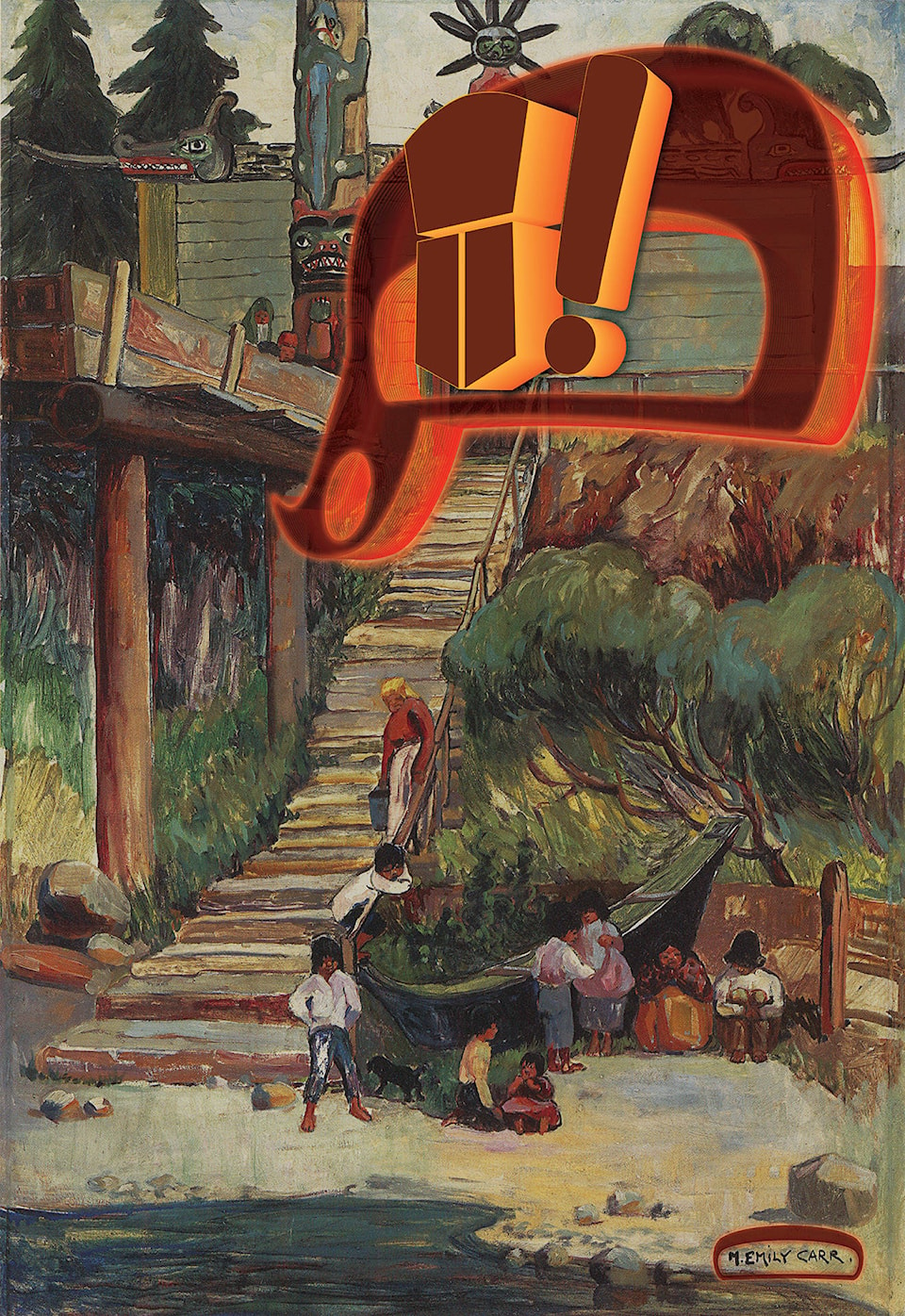A solo exhibition by North Island-based artist Sonny Assu (Ǧʷaʔǧʷadəx̌ə) opens today, Indigenous Peoples Day, at the Canada Gallery in London, England.
Asked about the significance of the date, Assu replied, “Everyday is Indigenous Peoples Day.”
The interdisciplinary Laichwiltach artist from We Wai Kai Nation fielded questions from the Mirror by email as he recovered from jet lag in London.
Assu is well-known for works that challenge colonial ideas of Canadian history. The work most prominently featured at the Canada Gallery is The Value of Comic Sans (2016), one of his digital interventions on an Emily Carr painting.
The original painting is Memalilaqua, Knights Inlet (1912), which depicts a Kwakwaka’wakw community in the remote coastal area north of present-day Campbell River. The scene is disrupted by a comic book speech bubble, a kind of “digital tag.”
The work is part of a larger series meant to challenge Carr’s depictions of Indigenous people as a vanishing race.
“With this piece I wanted to think of the importance and wealth of language, the comic book speech bubble paired with the copper shape,” Assu said. “The title, The Value of Comic Sans, points to an equally hated and loved font within pop culture.”
Copper appears elsewhere in Assu’s art. In works displayed last year at the Campbell River Art Gallery, he referenced copper shields used by chiefs during potlatch ceremonies.
Pop culture imagery is also a central theme for Assu. His love of comics as a child comes through in works like Thunderbird busting out of a Speculator Boom, which highlights the character Thunderbird from X-Men, a comic book depiction of an Indigenous person with superhuman strength.
“I couldn’t relate to him on the level of appearance as a kid, but I related to the fact that he was and is a strong Indigenous character, someone that I could be inspired by,” Assu said.
This radical mixing of Western and pop aesthetics with Kwakwaka’wakw iconography cuts to the core of identity for Assu, who was raised by his grandparents in suburban North Delta and learned about his heritage at the age of eight.
Fourteen pieces by Assu are on display at the London exhibit, representing five distinct series of work from 2012 to 2018. The exhibit, curated by the Baldwin Gallery of London, is also part of the ORIGINS Festival of First Nations art, which is currently underway in the UK capital.
The Canada Gallery itself is attached to the Canadian High Commission to the UK. It’s located inside Canada House, a showcase building on Trafalgar Square that provides consular and passport services for Canadians abroad.
The centre of the historical British Empire and Canadian colonial project is a unique place to situate Assu’s work, which explicitly confronts romanticized depictions of Canada.
“Everyday is Indigenous Peoples Day and I’m burning down the the facade of Canada (the colonial project) from the inside,” he said. “What is interesting about showing my work at Canada House is that it presents the counter-narrative to that colonial project and contextualizes the hidden history that people either don’t know about or don’t want to know about.
“Don’t get me wrong, I’m proud of this moment, this is a massive accomplishment for my work,” he said of the exhibition, which is called A Radical Mixing. “But I’m not here to wave any flags and I’m not going to pull any punches. So Indigenizing Canada House feels pretty good! I’m starting to see A Radical Remixing as an intervening on the colonial narrative.”
READ MORE: New exhibits at Campbell River Art Gallery unsettle Canadian landscapes
While in England, Assu will also be artist-in-residence at the Sainsbury Centre for Visual Arts at the University of East Anglia in Norwich, where he’ll be staying with his oldest daughter Lily.
At the end of the residency, Assu will give the keynote address at a conference titled “Bringing Light to the Dark: Visual Sovereignties in Contemporary Indigenous Art of the Americas.” Assu will also co-curate an exhibit at the Sainsbury Centre.



